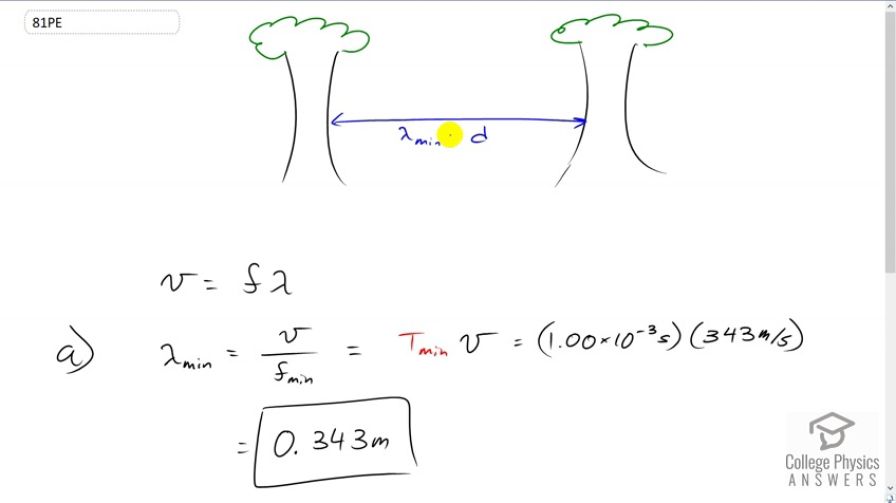Question
(a) A bat uses ultrasound to find its way among trees. If this bat can detect echoes 1.00 ms apart, what minimum distance between objects can it detect? (b) Could this distance explain the difficulty that bats have finding an open door when they accidentally get into a house?
Final Answer
- Since doors are wider than 17 cm, this does not explain why bats have a difficult time finding the door to exit a house.
Solution video
OpenStax College Physics for AP® Courses, Chapter 17, Problem 81 (Problems & Exercises)

vote with a rating of
votes with an average rating of
.
Calculator Screenshots
Video Transcript
This is College Physics Answers with Shaun Dychko. The minimum distance between points that can be observed with the wave are approximately equal to the wavelength, this is approximately equal to. So, for this bat, using ultrasound to measure the distance between two trees or distance between, yeah, two trees in this question, we know that this has to be true. So, using the wave speed formula, and we're given the minimum time resolution of the bat's perception. The minimum amount of time between receiving two different echoes. And, we'll substitute that for frequency because we're going to find out what this minimum wavelength is by dividing both sides by F here. And, it's going to be the wave speed divided by the minimum frequency. And, we'll say that the frequency is one over period. And so, we'll substitute period in place of one over frequency. And that's what we've done here. And so, the bat's minimum time that it can perceive is one millisecond, which is one times ten to the minus three seconds, and we multiply that by the speed of sound in air, which is 343 meters per second, which gives a minimum spatial resolution of 0.343 meters. Since doorways are wider than 34 centimeters, this spatial resolution cannot explain why bats have a difficult time finding the door to exit a house.
